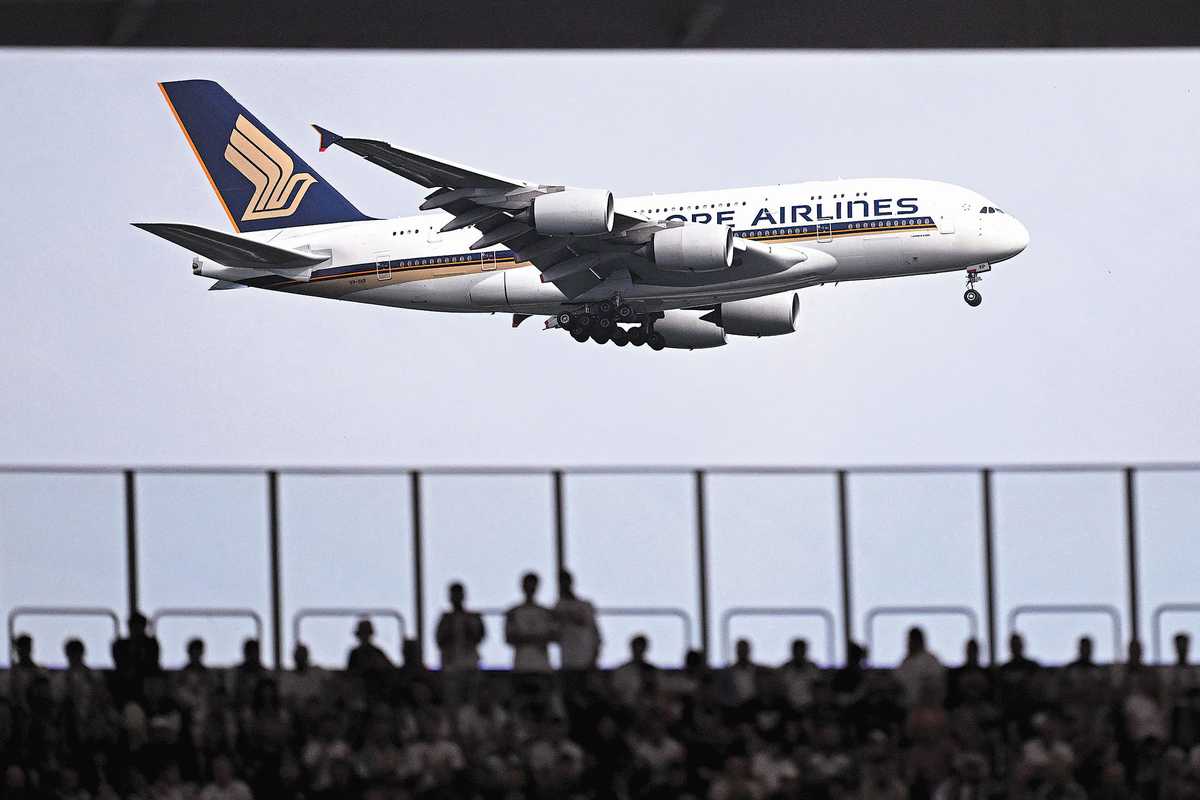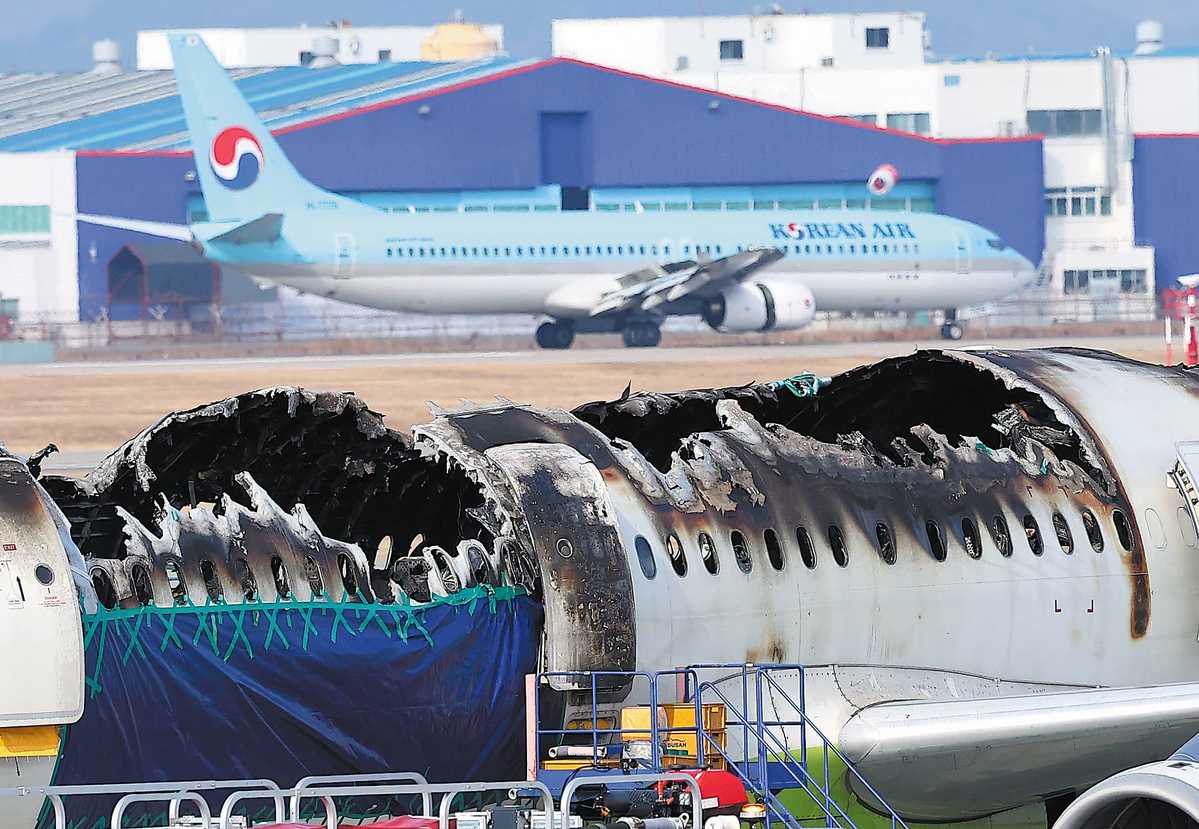
A Singapore Airlines plane flies above Frankfurt am Main on June 17, 2024. KIRILL KUDRYAVTSEV/AGENCE FRANCE-PRESSE
Editor's note: In this weekly feature China Daily gives voice to Asia and its people. The stories presented come mainly from the Asia News Network (ANN), of which China Daily is among its 20 leading titles.
Travelers who ignore a new aviation industry ban may face warnings, fines, or have their devices confiscated, experts tell The Straits Times.
From April 1, Singapore Airlines, or SIA, and its low-cost arm Scoot will prohibit passengers from using or charging power banks in-flight. This comes after a series of recent cabin fire incidents on carriers such as Batik Air and Air Busan.
Other Asian carriers, such as Thai Airways, Eva Air and China Airlines, have implemented similar rules.
Asked how the ban will be enforced, an SIA spokesperson said: "The safety of our customers and crew is a top priority for the SIA Group. Our crew are trained to remain vigilant and ensure customers comply with in-flight safety procedures."
While SIA has not specified consequences, experts such as John Tan, lead professional officer teaching air transport management degree program at Singapore Institute of Technology, or SIT, believe airlines will first issue warnings to passengers who do not comply.
Tan says: "If the problem continues, penalties could include fines or confiscation of the device. In extreme cases, passengers might be removed from the flight once it lands, and repeat offenders could be banned from future flights."
Caleb Sim, senior lecturer teaching the aviation management diploma program at Republic Polytechnic in Singapore, agrees, referencing the 2016 ban on the Samsung Galaxy Note 7.
In October 2016, multiple airlines — including SIA and all United States carriers — prohibited the Samsung Galaxy Note 7 from being brought on board, either in carry-on or checked-in baggage. The phone had been deemed a fire hazard following multiple reports of overheating, burns and other injuries.
Noncompliant passengers in the US faced fines or criminal prosecution, while SIA denied boarding to those carrying the device.
Sim says national and international civil aviation authorities need to rally behind airlines so they can be empowered to enforce stricter consequences.
He adds: "Asian airlines tend to be more 'polite' or service-oriented, and usually aim to create a positive travel experience for their passengers. So, I suspect they will not be too harsh in enforcing the consequences of using power banks in-flight until national or international aviation authorities step in with regulations."
Since 2016, International Air Transport Association regulations have required lithium-ion batteries to be carried in the cabin, instead of the cargo hold.
Under the current rules, power banks with a capacity of up to 100 watt-hours are permitted in the cabin. Those between 100Wh and 160Wh require approval, and those above 160Wh are not allowed on board.

The remains of an airplane that caught fire are seen at Gimhae International Airport in Busan, South Korea, on Feb 3. A portable power bank likely caused the fire, local authorities said. YONHAP
Pros and cons
Singaporean freelance creator Dylan Wong supports the ban.
The 31-year-old says: "For me, getting from one destination to another safely is more important than having a fully charged device."
SIT's Tan says while the ban improves safety, it is likely to cause inconvenience for many travelers, especially frequent flyers and business travelers who depend on power banks to stay connected in-flight.
While SIA provides USB ports and power sockets, economy travelers on Scoot must pay between $5 and $11 for in-seat power supply, depending on the flight duration.
An SIA spokesperson said Scoot is committed to ensuring that prices remain affordable.
Engineer Darren Lee, 31, often travels on Scoot and worries about long flights without power.
"When I reach my destination, I don't want to have to worry about my phone dying as I navigate the airport, book transport or check in to my hotel," says Lee, who adds that he is unlikely to pay for in-seat power.
He believes that some passengers may secretly continue to use their power banks, which could be riskier due to heat building up in enclosed bags.
For clearer guidelines on power bank use, Sim suggests that in-depth research be done to identify the make and model of power banks involved in cabin fire incidents.
"Not all power banks are manufactured to the same standards. Right now, we don't really have any control over what type and what quality of power banks passengers bring on board," he says.
Despite the mixed feedback from travelers, Tan says the ban signals a broader shift in aviation safety.
"As new technologies such as personal devices and advanced systems become more prevalent, the industry is increasingly focused on managing risks. This proactive approach shows that airlines are addressing potential safety issues before they become widespread problems," he says.
The Straits Times, Singapore